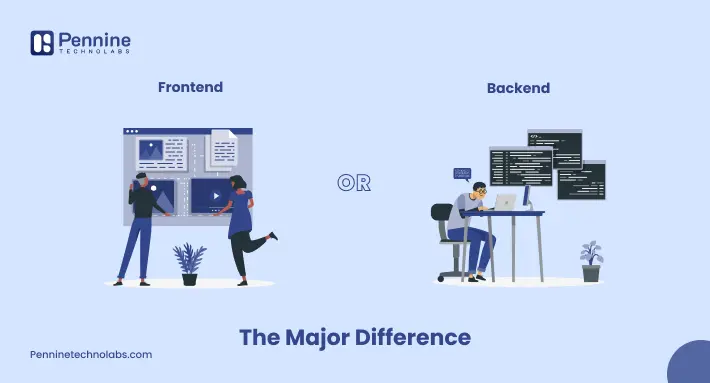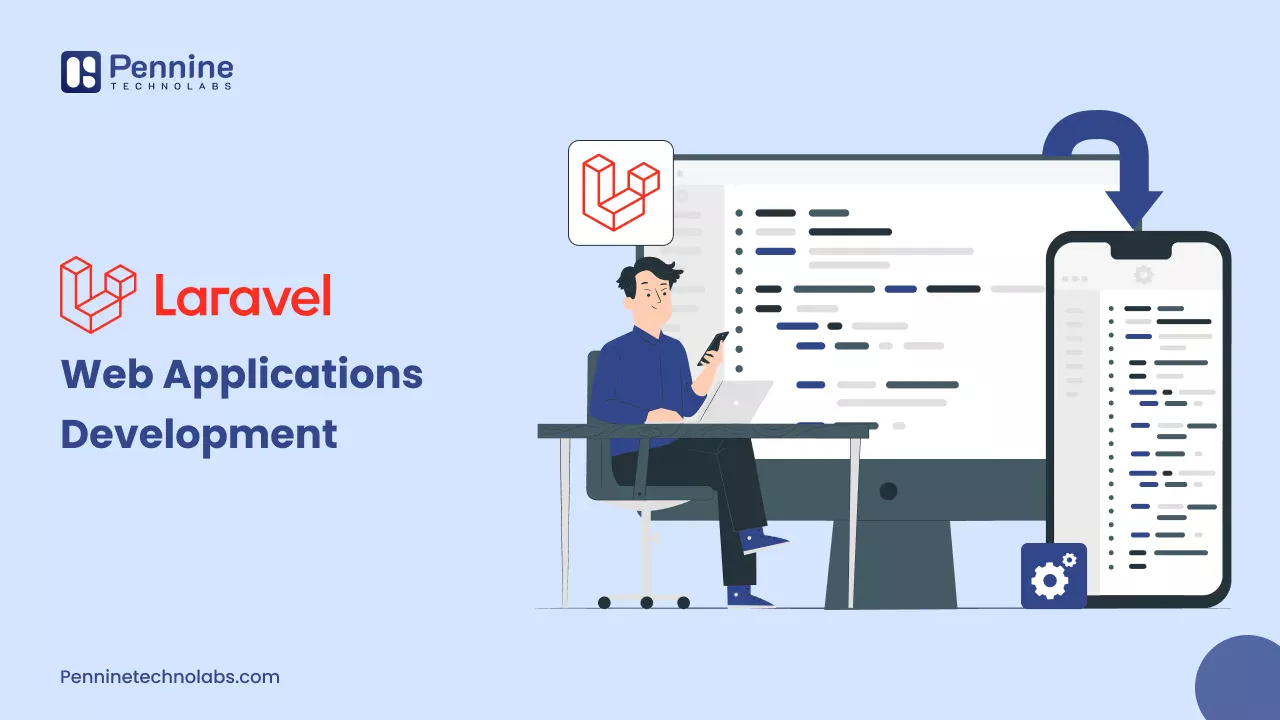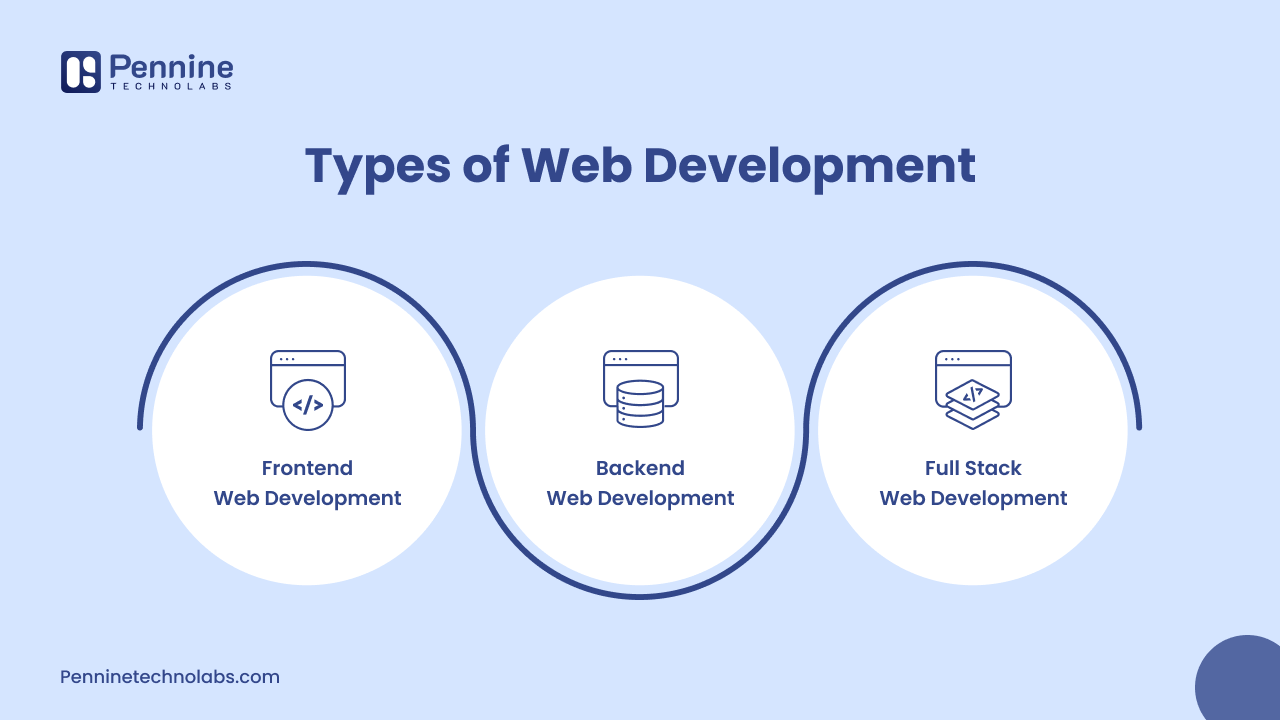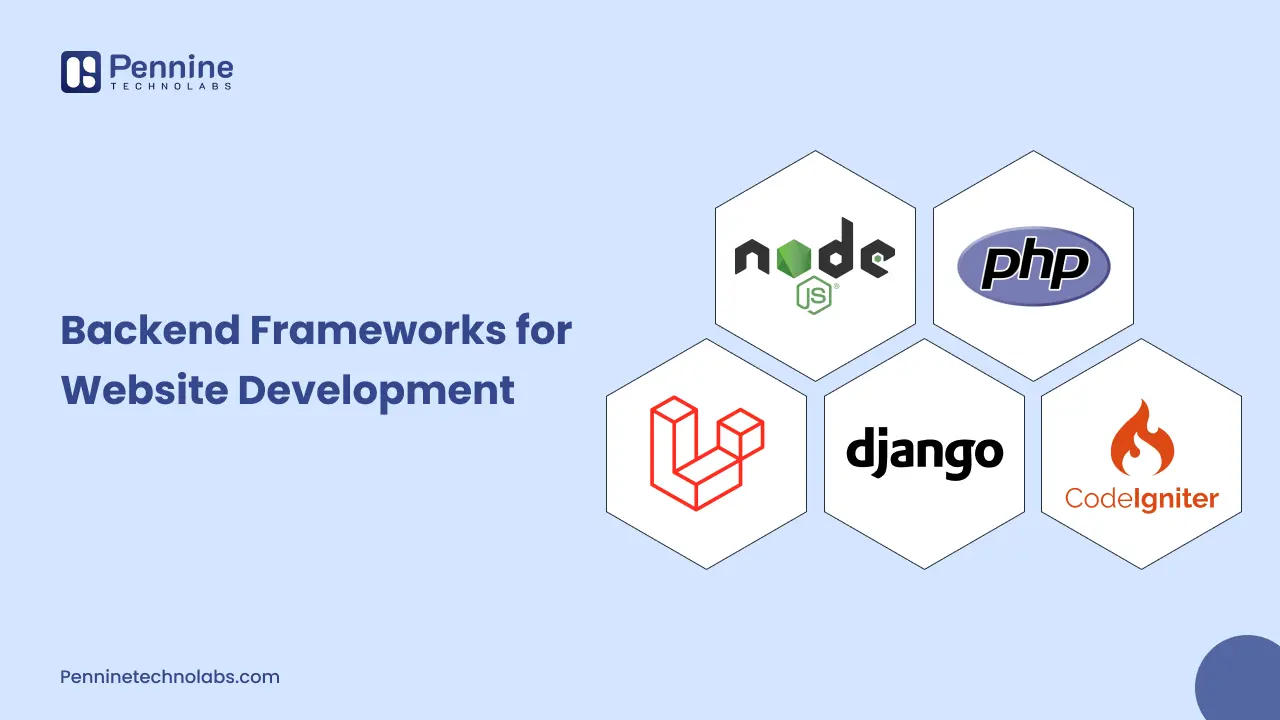Quick Summary: Front-end and back-end are two main aspects of web development. Frontend handles users and interacts, while the backend gives powers to logic, database and server-side functions. This blog has been used by both roles, technologies (eg React, Angular, PHP, Laravel, Node.js), and the difference between the front, backend and full stack development. Know which to choose for your next project or career.
When you open a website or use a mobile app, you are interacting with the results of two major development themes: Frontend and Backend. Both these areas work together to create digital experiences we use every day, but they serve very different purposes.
The frontend is what your users view, and it contains visual elements such as buttons, checkboxes, pictures, and text messages. It enables users to engage with your program. The Backend is the data and infrastructure that powers your application. It saves and processes application data for your users.
What is Frontend?
The frontend is the part of a website or application that users see and interact with directly. This includes layouts, buttons, navigation menus, images, animations, and overall designs. If you are reading Pennine Technolabs Blog on a laptop or mobile screen, what do you see: fonts, colors, layouts – which is the frontend?
It is often referred to as the “client side” of a website.
What is Frontend Development?
Frontend development design files and user interface ideas involve converting ideas into a format that can be displayed in a browser. This consists of structuring the content using HTML, styling it with CSS, and making it interactive through JavaScript.
The primary purpose of a frontend developer is to ensure that a website is sharp, responsible, user-friendly, and looks great on all devices.
Frontend Technologies
Frontend technologies are building blocks that shape how a website looks and behaves on the user’s screen. These technologies ensure that users have a smooth, responsive, and interactive experience.
1. HTML (Hypertext Markup Language)
HTML forms the backbone of any webpage. It structures the content, such as headings, paragraphs, images, buttons, and forms. Without HTML, the browser will not have a proper content structure.
2. CSS (Cascading Style Sheets)
CSS defines the visual presentation of a webpage. It controls layout, colour, fonts, spaces, and responsiveness. Modern CSS includes equipment such as flexbox and grids for complex layouts, and the design to make it mobile-friendly.
3. JavaScript
JavaScript brings websites to life by enabling user interactions. It handles dynamic content updates, form verification, real-time notifications, and more. It also provides power to single-page applications (SPAs) that immediately load without refreshing.
4. TypeScript
Typescript is a superstate of JavaScript that adds stable typing. This helps developers detect errors during development, improve scalability, and improve code quality in large applications.
5. JSON and AJAX
These technologies allow data to be brought from the Backend without refreshing the page. It enables smooth user experiences such as live chat, filtering, and search tips.
Frontend Frameworks
Frontend frameworks provide a pre-structured codebase and best practices to speed up development and maintain code clarity. They handle state management, routing, component rendering, and performance optimization.
1. AngularJS
Developed by Google, AngularJS is a dynamic JavaScript framework used to create single-page applications. It provides two-way data binding, dependency injection, and a proper structure, which makes it ideal for a scalable frontend website.
2. React.js
The ReactJS built by Meta is a component-based JavaScript library. This allows developers to create a performance interface by reusable components and virtual DOM for rapid rendering. It is widely used in interactive web app solutions.
3. Webflow
Webflow is a no-code web development platform that allows designers to develop a responsive website without manual code. It creates clean HTML, CSS, and JavaScript in the background, making it a powerful tool for frontend prototyping and live websites.
4. Vue.js
Vue.js is lightweight, flexible, and progressive. It is easy to learn and is excellent for small to moderate-sized projects. This provides reactive data binding and a simple syntax, making it beginner-oriented.
Also Read: React.js vs Node.js: Which Framework Is Suitable for You?
Frontend Library
Frontend Libraries are collections of pre-written code that solve specific problems. While the framework provides a structure, the library offers tools.
Popular frontend libraries include:
- jQuery: DOM simplifies manipulation and cross-browser issues
- D3.JS: Data helps with visualization
- Chart.js: Makes beautiful interactive charts
- GSAP: Powerful animation for websites and UI
Using libraries reduces the time spent on repeated coding work and improves efficiency.
How to Hire a Frontend Developer
It is essential to hire a dedicated Frontend developer and check for technical skills.
- A strong portfolio shows responsible and interactive designs
- Experience in HTML, CSS, JavaScript, and modern structure
- Understanding UX/UI design principles
- Familiar with tools like Figma, Git, and version control systems
- Attention to a user-centric mindset
Pennine Technolabs is a fast-growing web app development company offering Frontend development services across the world with React developers, Webflow developers, AngularJS developers, and Vue developers.
What is the Backend?
The Backend is part of a website or app that users do not see. It works behind the website to store, recover, and process data. Whenever you log in, submit a form, or pay, the Backend ensures that everything works safely and efficiently.
This is often called the “server side” of the application.
What is Back End Development?
Backend development encompasses server-side logic, databases, APIs, and systems that support the frontend. It ensures proper data flow from the browser to the database and returns.
A backend developer is responsible for developing the Backend of any web or mobile platform, ensuring performance, scalability, and data protection.
Backend Technologies
Major backend technologies include:
- Languages: PHP, Python, Node.js, Ruby, Java, Go
- Database: MySQL, PostgreSQL, MongodB, Redis
- Server: Apache, Nginx
- API: Rest, GraphQL
- Certification Equipment: JWT, OAuth
These tools work together to handle business logic, data processing, and safe communication.
Backend Frameworks
Backend technologies manage the developers’ side of the website. These tools handle data processing, server logic, database operation, and application security.
1. PHP
PHP is a popular server-side scripting language used to create dynamic websites and web applications. It is widely supported and has a robust platform, such as WordPress, which presents many backend projects.
2. CodeIgniter
CodeIgniter is a light PHP framework known for its simplicity and speed. It is ideal for small to medium-sized applications and provides a minimum footprint with strong performance and underlying security features.
3. Laravel
Laravel is a modern PHP framework that emphasises clean syntax and developer productivity. This includes features such as eloquent ORM, routing, authentication, and task scheduling, which are suitable for a complex backend system.
4. Node.js
Node.js is a runtime environment that allows JavaScript to run on the server side. It is event-driven and non-blocking, which makes it perfect for real-time applications such as chat apps, streaming services, and APIs. This whole stack is also a significant component in JavaScript development.
5. Django (Python)
Django follows a “batteries-included” philosophy. This comes out of panels, safety facilities, and more boxes. Perfect for rapid development of safe and scalable web apps.
6. Rail on ruby
Emphasizes the convention on configuration. Developers can build applications with features using low-code. Known for productivity and rapid prototypes.
7. Spring boot (java)
Spring Boot Enterprise simplifies Java development. This includes equipment for safety, microservices, and API development. Large scale, most suitable for complex applications.
How to Hire a Backend Developer?
When hiring a backend expert, focus more on the coding capacity only. Here is a quick guide:
- Experience with multiple programming languages and frameworks
- Understanding of database management and server architecture
- Safety to write, scalable, and efficient code
- API, familiar with cloud platforms, and perfect workflows
- Problem-solving and debugging skills
Check the GitHub portfolio or project and assess how they handle the real-world backend challenges.
Front End vs Back End Development: Which One Should You Choose?
- It depends on your business goals and requirements.
- If your focus is on visual, user experience, and interface design, then go with the frontend development company.
- If you are more interested in logic, databases, and how things work, find a backend development company.
- Most successful digital products require both.
What is Full Stack Development?
A full stack developer works on both the frontend and Backend. They can create a complete application from the user interface to database management.
Fullstack developers often use:
- Frontends: React, Vue, Angular
- Backend: Node.js, Laravel, Django
- Database: MongoDB, MySQL
- DevOPS Tools: Docker, GIT, CI/CD platform
They are particularly valuable in startups or small teams where versatility matters.
Front End vs Back End vs Full Stack
| Aspect | Frontend | Backend | Full Stack |
|---|---|---|---|
| Focus | User Interface | Server and Data | Both |
| Technologies | HTML, CSS, JS, Frameworks | Node.js, Python, Databases | Combines both |
| Visibility | Visible to users | Hidden, behind the scenes | Both sides |
| Responsibility | Design, interactivity | Logic, database, APIs | Complete development |
| Career Path | UI/UX centric | Logic centric | Versatile and in-demand |
Conclusion
Frontend and backend development are two sides of the same coin. One handles the look and feels while the other powers functionality and logic. Both are essential, and understanding the difference helps in creating better web solutions and making more intelligent choices when hiring a web developer.
If you want flexibility and complete control, Pennine Technolabs full-stack development is the correct fit. The choice comes down to your project complexity, goals, and team structure. Hire a web developer in the USA, India, Canada, Australia, UK, and UAE, and get the best web and mobile application for your business. Pennine is your website partner for scalable and responsive Front-end or Back-end website development.
FAQs on Frontend and Backend
What is the main difference between frontend and backend development?
The frontend focuses on the interface, while the Backend manages the database, logic, and server-side operations.
Can one developer handle both frontend and Backend?
Yes, that’s what Full stack developers do. They work on both sides of an application.
Which is harder, frontend or Backend?
It depends on the person. Frontend requires creativity and UX skills, while the Backend includes logic, data handling, and safety.
Is frontend or Backend better for beginners?
The frontend is usually understandable for more visual people and beginners. The Backend may require more technical understanding.
Do frontend developers need to know design?
Not completely, but it is highly valuable to understand design principles and user experience.
Which has better job opportunities: Front-end or Back-end development?
Both are in demand. Full stack developers are mostly in demand due to their versatility.



